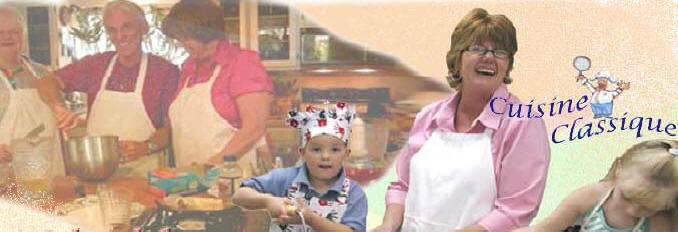|
Our good friend Mary
brought us a RED ABALONE last Saturday.
Her had brother shipped it overnight from Marin
County, California to
Mary, and Mary brought it to Bob and me to share!
We love Mary, she is always bringing us great
things to eat and, she is always willing to work
on our old commercial gas range to keep it cooking
along. Although
I have read a lot about Abalone, I never thought I would get to eat
one.
Yet, there it was, beautiful, heavy, huge, and
smelling sweet and briny.
We remembered to measure it; nine inches
long, seven inches
across, and six inches deep, but in our excitement,
we forgot to weigh it.
Sometimes my gluttony passes my brain-ttony by.
I read a few articles on “how to cook an abalone”
before Mary
arrived, so we would be prepared.
I discovered that there are different Abalones,
basically residing
at different depths in the ocean. There are the Black Abalone
usually at tide pool depth. Then there are Pinks and
Reds captured at increasingly deep reaches of Davey
Jones' locker. As with most things,
the best are the most difficult and dangerous to acquire.
For our delightful adventure today, we would need a
large sink,
(preferably outdoors as this can get stinky), a
couple of big colanders,
and various kitchen utensils and tools to pry the
abalone from its shell.
Bob and I gathered lots of metal, wood and rubber
spatulas, with
some wide screwdrivers thrown in, just in case.
To say the Abalone is reluctant to leave its shell is
understated.
Mary did the actual prying from the shell, while I
drank a Corona,
and offered up new “tools” and plenty of seemingly
valuable advice.
Bob kept bringing us the new tools to use to try to
get between
the muscle and the shell.
It finally popped (really a better word would be,
unsucked or maybe disvacuumed), after about 20-25
minutes of levering. Mary was
able to pry it out of its shell completely intact.
We didn't even need
the chainsaw nor the pneumatic chisel or the
shotgun
It is very important to try not to puncture the gut
sack, because
you do not want to cut into, or disrupt, the gut
sack while it is still
attached to the muscle or the actual eating part.
(It’s stinky!). I am
not sure what the technical name for the gut sack
is, I could only
think of that or, tube of innards, which doesn’t
sound any better.
Once Mary removed the gut sack, I was awarded the honor
of
picking through it, looking for a pearl(s).
Hey, it could happen!
I put the gut sack in a colander under running
water, to rinse and poke through the guts. It
wasn’t really a big deal, since Abalones eat kelp,
seaweed, etc. so it was just green and slimy. I’ve
dug through a
lot worse things in pursuit of a tasty meal.
This, of course, would be a meal of a lifetime for Bob
and me.
There has been a moratorium on harvesting abalone off
the coast
of California since 1997. They are only available
during the season
which runs from April through June 30th, and August
1st-November 30th.
They are only harvestable by “free-divers”, or
shore pickers. Okay,
so free-diving means, without supplemental oxygen.
Which ultimately
means, unless one floats past Bob and me, and I
don’t freak out because
it looks creepy, we are not going to be able to
”catch” one. Mary’s brother dove 60 feet deep, or
so, in really cold, (about 52 degrees) water, to
harvest the Abalone we were enjoying. So much for
my ”If I can’t catch and kill it, maybe I shouldn’t
be eating it philosophy”.
Back to the adventure of cooking this incredible
mollusk (it is actually
a sea snail).
After Mary pried it from its shell, and removed the gut
sack, she showed me how to carefully trim off the
hard outer part of the abalone. It would be
too tough to eat, even after smacking it with a
meat pounder. We set these scraps aside to freeze.
We will make Abalone Chowder, when we need
to taste this incredible mollusk again.
After trimming the abalone, Bob manned the meat slicer,
and carefully sliced the abalone into about
1/8-inch thick slices. Mary and I pounded
these slices carefully. We were trying to break up
the muscle tissue,
but not create holes. In the meantime, I was
melting about ¼ pound of
butter with 5 cloves of garlic; peeled, and
crushed, together in a large
sauté pan. When the first three slices were ready
we added them to the sauté pan and cooked them for
about 30 to 40 seconds on each side.
It was delicious and unlike anything I have ever
eaten. The meat
was succulent, sweet and briny, similar to an
oyster, but at the
same time, not like an oyster.
It was sweet, buttery, garlicky, and as addictive
as the ocean itself.
I was instantly captivated by the flavor and I will
be remembering the
wonderful sensation for a long, long, time.
We ate the rest of the Abalone standing over the sauté
pan, not
even bothering with plates. When it was gone, we
took pieces of
baguette and dipped them into the abalone butter
and sucked all of
the Abalone essence out of the butter.
Okay, by now, I was ready to get naked for Abalone!
Sometimes I am overwhelmed by the joy that comes
from good friends,
good food, and good husband. It is meals like this
that compel me to
preach the gospel of good food and keep teaching
cooking classes!
For more information on Abalone Season in northern
California,
you can go to the California Game and Fish
Department website:
http//.www.dfg.ca.gov/marine
For more information on good friends and good
husbands…..look
around, they’re everywhere. Just don’t you steal
someone else’s.
Chow!
Mardi
|
